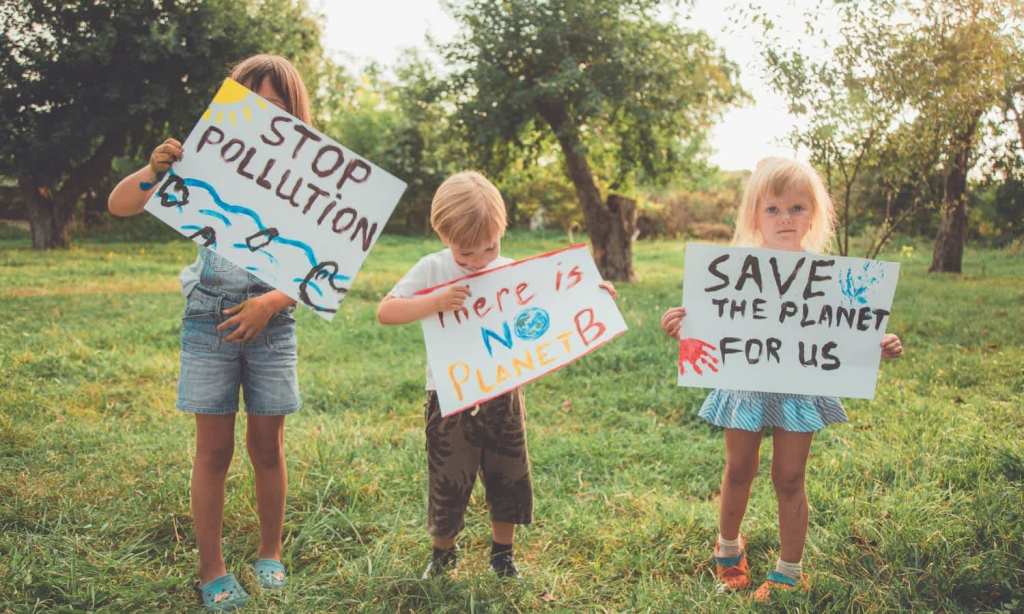The Latch has partnered with Suncorp Bank to deliver the sustainability content you need when figuring out what you can do to drive real climate action.
Climate anxiety is real — even for kids. A recent report involving 10,000 children across various countries (including Australia) showed that half of the respondents reported feeling sad, angry and guilty about climate change.
As parents, we can only buffer and bolster a child from the realities of the world until a certain age, after which, we have to give them the tools to understand the world as it unfolds around them. Future generations will have the challenging duty to respond to climate change, and we can start by speaking to them without scaring them about it now.

We spoke to Nancy Sokarno, a psychologist at the digital mental health platform,
Why Should Parents Speak to Kids About Climate Change?
According to Sokarno, yes. It’s important to help our children feel informed and form positive habits from a young age, however, we also need to ensure we’re not scaring them or giving them eco-anxiety.
Talking to kids about positive changes they can make — like using less water or plastic, or walking more instead of using the car — are important, but it’s also important to choose the language you use carefully. It should always be encouraging and inspiring, not berating or inciting fear.
What Age Should You Start Speaking to Your Children About Climate Change?
This really depends on the child because each child develops at a different rate, explained Sokarno. Many experts suggest children in the 12 to 15 years age range are ready to talk about climate change and enjoy asking questions to build an understanding of the topic.
Related: Yes, It’s Possible to Compost If You Live in an Apartment — Here’s How
Related: Your Ultimate Guide to Understanding Every Single Recycling Symbol
However, the right time or age isn’t always clear cut and it’s important to consider your individual child to determine how much (or how little) you discuss with them. If your child is particularly sensitive, you may want to wait a little longer, or instead tread cautiously or frame the issue in a more positive light.
How Can Parents Introduce the Topic of Climate Change to Their Children?
Parents can start by talking to children about their own habits and how they can have a bigger impact on our environment. It’s ok to talk to them about things like water usage, recycling and carpooling — so long as you don’t scare them about what is happening with the environment. Instead, frame things in a positive way and show them the benefits of those positive habits, rather than the risks or outcomes of what happens if they don’t do them.
According to Sokarno, it also depends on the child and how sensitive they are. Language is incredibly important and being mindful of the way you frame each idea, ensures that you’re not instilling fear or leaving too many questions unanswered (which can risk the child’s imagination running wild). Try not to overwhelm them with too many examples at once, and instead, discuss separate ideas gradually and in a nurturing way.
What Should Be Avoided When Speaking to Kids About Climate Change?
Sokarno’s advice is to avoid negative statements like “if you do this, then this is going to happen”. Instead, focus on solutions and reinforce that every little bit counts and that each person is responsible for their input.
Talk about what steps everyone can take as an individual and family, such as recycling, saving water, or switching off unused appliances. If your child is curious about the world and interested in science, you can use science as a way to explain what is happening on the planet (we have added some resources for this below).
Reinforce the idea that taking small actions can collectively help to alleviate the issue, even if it’s a small one.
Where Can I find Expert-Recommended Resources to Explain Climate Change to My Kids?
There are several books you can turn to for climate change information that’s designed specifically for children. Books like You Can Change the World by Lucy Bell discuss topics like avoiding single-use plastics, making a compost bin to reduce waste and starting a herb garden. It shows children the actionable steps they can take to make the world a better place, without making them feel responsible, scared or overwhelmed.
There are also resources like NASA’s Global Climate Change website, which has a plethora of expert climate content that is engaging and approachable. For younger children, NASA also has the Climate Kids site which tackles topics similar to those on its companion site, but it amps up the engagement through cartoons and games. In addition to digital content, Climate Kids also has resources to get kids building and designing.
Read more stories from The Latch and subscribe to our email newsletter.







